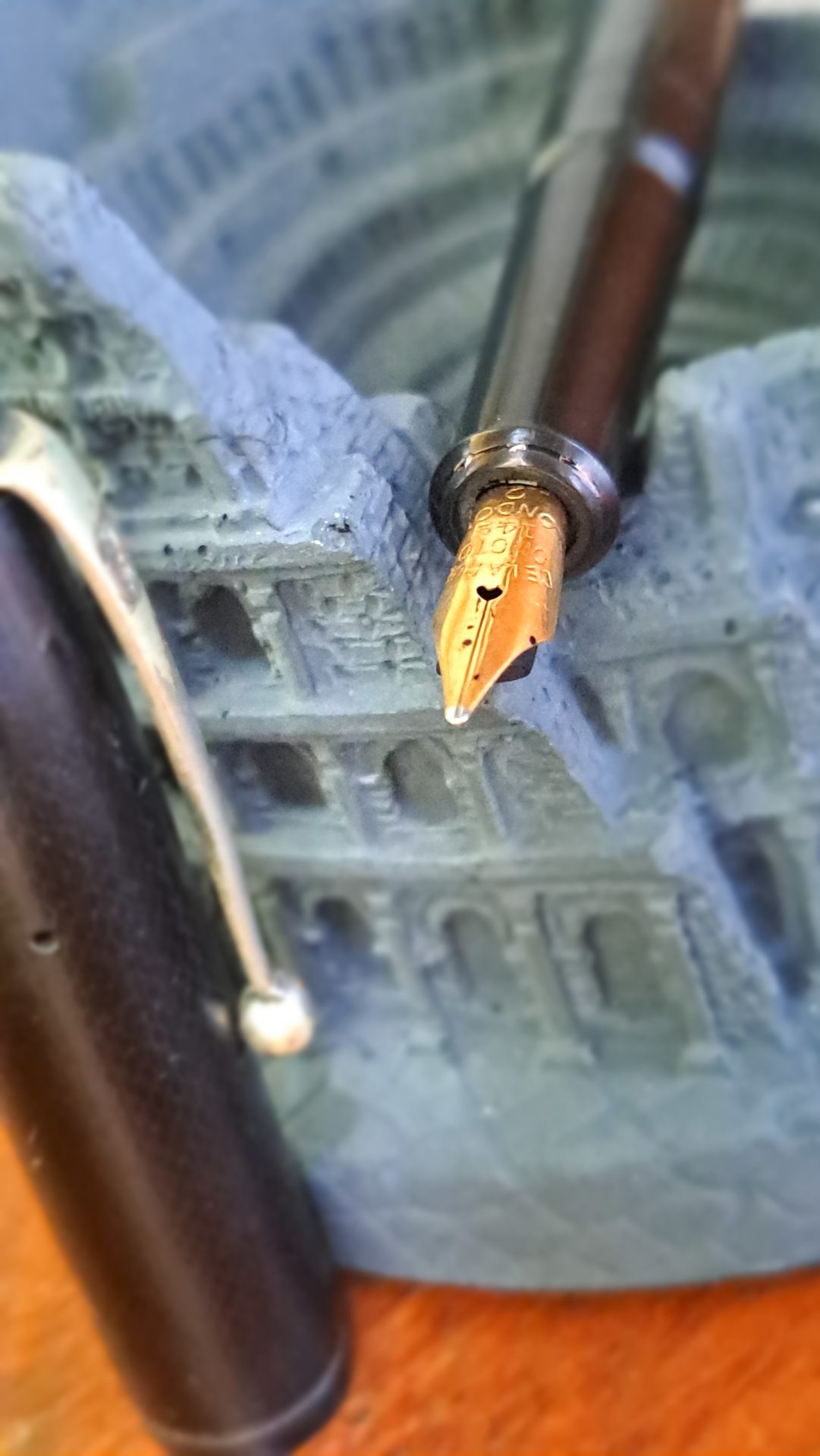
Onoto, everything good that the Empire stood for, ever, in a fountain pen that defies time and continues to evoke glories past!
The year 1905 was an interesting one. Arthur Conan Doyle, bowing to public sentiment, was scripting the Return of Sherlock Holmes. Mata Hari was giving her first dance performance in Paris. Einstein was putting the final touches to his paper detailing the Quantum Theory of Light. The Japanese were destroying the Russian East Sea fleet in the Battle of Tsushima. Sun Yat-sen was forming the first chapter of T’ung Meng Hui to bring down the Manchus. Oliver and Wilbur Wright were creating records flying. And De La Rue, a company founded by Thomas de la Rue in 1821, an established stationer and printer by then, was setting up Onoto in England, to storm the world of fountain pens.
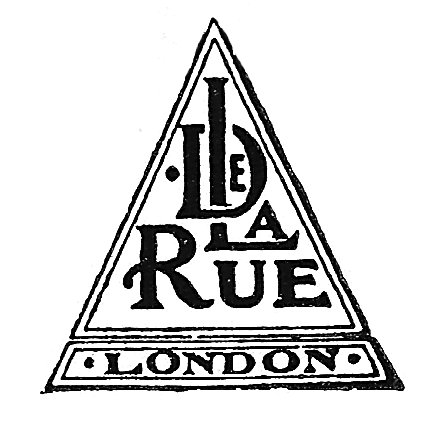
I use the term “storm” deliberately. Yes, the market for writing instruments was already well-developed and the number of players, both big and small, was also enough to act as a deterrent for the faint hearted, but De La Rue had two things going for it – one, it had deep pockets and two, it had up in its sleeve, an ace – the plunger filler, a radical and efficient alternative to the eyedropper filler pens that were de rigueur those days. And storm, Onoto did, soon creating a niche for themselves as a manufacturer of quality writing instruments, which became highly sought after. As a matter of fact, neither competition nor the complete destruction of its factory in the Blitz could put the brakes on the march of Onoto pens, which continued unabated till its production ceased in 1958. (The Onoto name has since been resurrected and is now synonymous with some very classy, high-end fountain pens, but that is another story).
The earlier Onotos were made of hard rubber and were celebrated for their plunger-filler systems, which unlike the others that were available in the market, are much easier to assemble, making restoration easier. The nibs that these pens sported were overwhelmingly 14 carat gold and were known for their sturdiness, mixed with the right amount of springiness, “wet, flexi delight”, as they were popularly called.
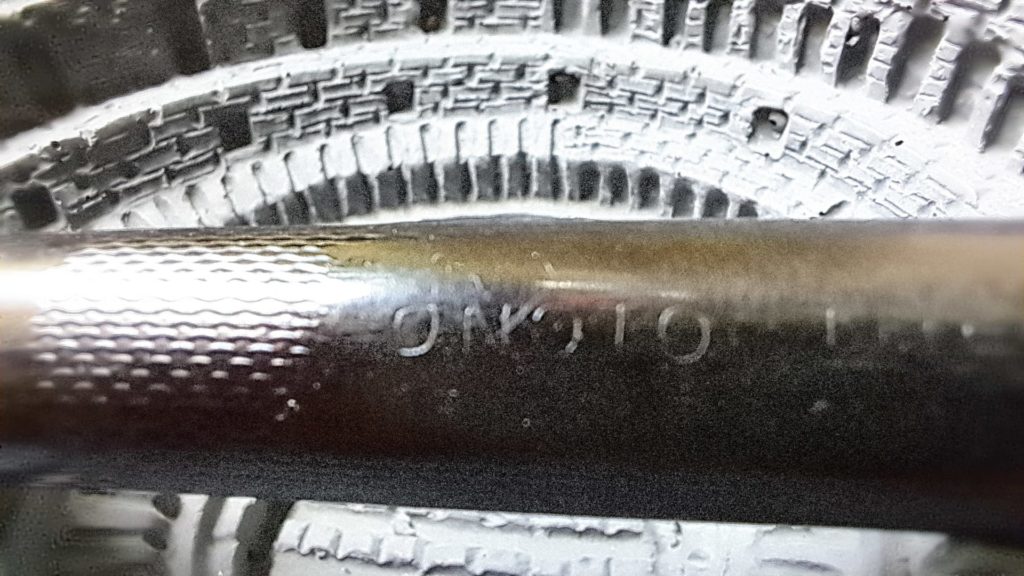
The other almost trademark feature that Onoto pens from this period sported, was the chased snake’s head pattern. I have heard experts say that the particular pattern was arrived at to provide the writer with a better grip, but that is about all that I know and will therefore not venture deeper into the matter than this. What I can definitely say is that the etching provides these pens with a period-specific grandeur that has hardly ever been replicated. As a matter of fact, it will not be an exaggeration to say that Onoto pens, in those days, were the flag carriers of everything that the empire stood for. And that may explain why they were so popular in India. De La Rue, with its long association with India (since 1876, no less) could have been the driving force, though the fact that the fountain pens were extremely well crafted, not to mention their aesthetic appeal and the fact that they were of pukka English origin must have helped.
However, it is also a fact that Onoto pens from this period are extremely hard to come by. Perhaps the fact that they are a collector’s delight and no fountain pen fanatic worth his / her collection is willing to part with the ones in their possession is a reason. The constant effort of dealers to palm them off in the international market to glean the exchange rate advantage may be another; while the possibility that since these fountain pens were so desirable as workhorses, they were therefore flogged to the edge of disintegration, leaving carcasses that are just not fit to be exhumed.
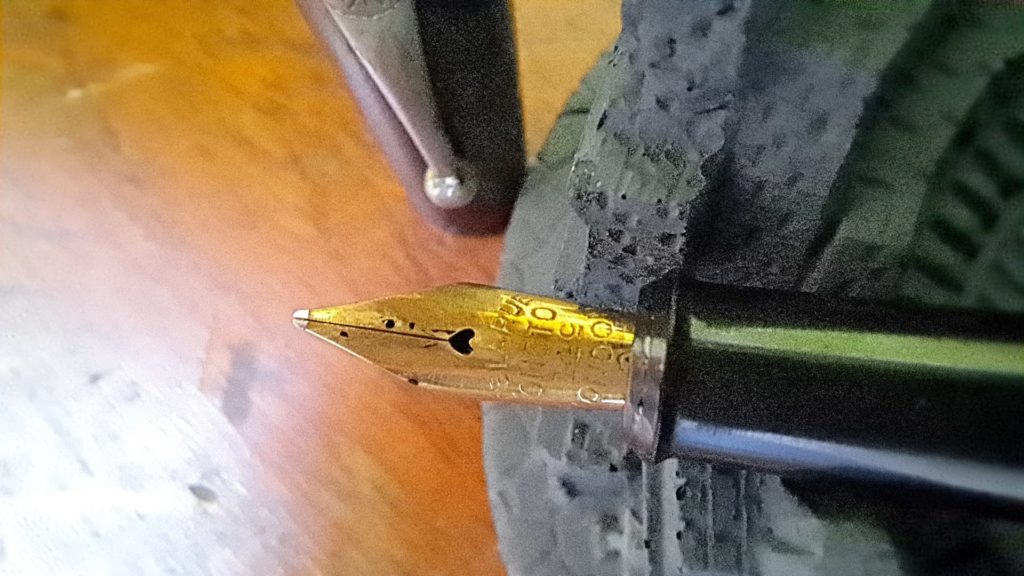
Take the Onoto that I am now presenting to you. The pen is a sheer delight, considering its vintage. The “Onoto The Pen” and “De La Rue & Co Ltd London” imprints are as clear as they can get to an old man with failing eyesight. The snake’s head chasing on the black, shiny surface of the barrel and cap, is resplendent with the stiff upper lip, while the 14-carat gold nib writes with a flair that would make a foppish dandy from a hundred years ago proud!
But like most Onoto pens from this era, mine too is not complete – missing is the gold cap ring. However, what really breaks my heart is the fact that sometime in the past, the plunger filler system of the pen, the real evolutionary high point, was replaced and the bottom was sealed off to turn the pen into an eyedropper filler. Legend has it that generally, plunger fillers were very difficult to repair and removing them lock, stock and barrel to extend their lives as EDCs was the norm, especially considering the fact that most imported pens were mended locally those days as it was prohibitively expensive to send them back to England. Mine may not have been an exception and I guess the pensmith who must have done the honours must have been a reputed one, for such a procedure too, was certainly not something that would have been entrusted to novices. The fact that the sealing holds good, till date, only goes to bolster what I surmise, with huge dollops of regret.
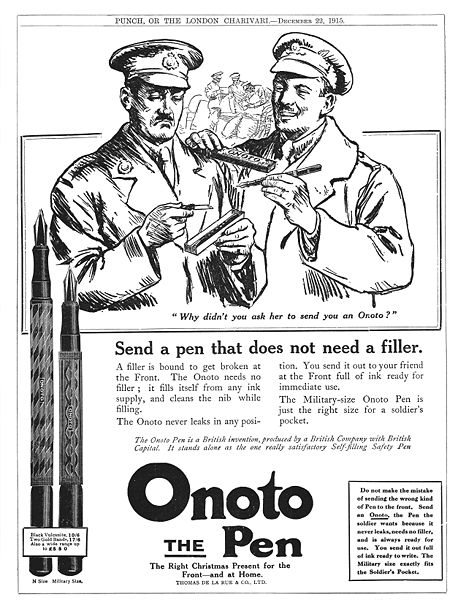
For more information you can visit: For more information visit: Onoto The Pen

Thanks for the nice article, I’m restoring an Onoto and just got some replacement parts from England. Can’t wait to get to it!